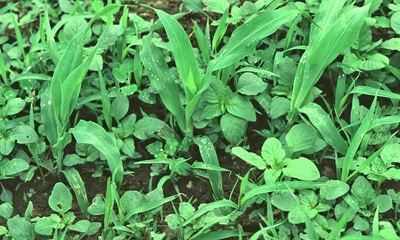August 26, 2016

While the weed resistance story has changed drastically in the past five years, my advice remains the same. The information I presented in a 2010 Dakota Farmer article still rings true:
“With resistance, the first step is identifying whether you have it. If you are not achieving 100% control of the weeds in your fields, you need to address why. Just five plants remaining per acre in Year One can lead to 400 plants per acre the following year. And by Year Three, there is potential for 32,000 plants per acre to produce resistant seed.”

HEAVY PRESSURE: Corn plants are surrounded by a thick stand of weeds.
Farmers must approach weed management proactively rather than reacting to a problem. The management strategy many used was applying preemergent herbicides in corn and soybean fields because:
* Early weeds do the most damage to yield.
* A preemergent herbicide gives timing flexibility with post-applied herbicides.
* University data has shown yield increases by including preemergent chemicals in your program.
Another option is tank-mixing other herbicides with glyphosate in your post-applied applications. The dry May and June in areas this year may have reduced the effect of these, but overall the pres worked pretty well.
We need to use pres in all crops available. Visually, most problem areas are soybean fields, but I have also noticed many dirty non-soybean crops, which can increase the weed seed bank in our fields. Using companion herbicides adds additional modes of action to your weed management system and helps reduce the spread of these resistant weeds, as well as a reduction in herbicide resistance, prolonging the use of our current effective herbicides.
Many farmers planted some LibertyLink soybeans in 2016. Liberty is the only nonselective herbicide we have available today in soybeans with no resistant weeds. We tested the very first LibertyLink varieties when they were introduced in 2006, and have been testing and growing them ever since.
We expect to have some more options for this next year. Roundup Ready 2 Xtend has received the export approvals it needs, and the EPA approval of the herbicide is expected by the end of the year. Enlist and Balance GT are not too far behind, but still lack some export approvals for a full launch. These options most likely will be seed production only in 2017, with a full launch in 2018.
Spelhaug is an agronomist with Peterson Farms Seed, Harwood, N.D. Follow him on Twitter at @PFSAgronomyGuy, and read his contributions to The Peterson Blog at petersonfarmsseed.com/blog. For more information, contact him at 866-481-7333 or [email protected].
You May Also Like




